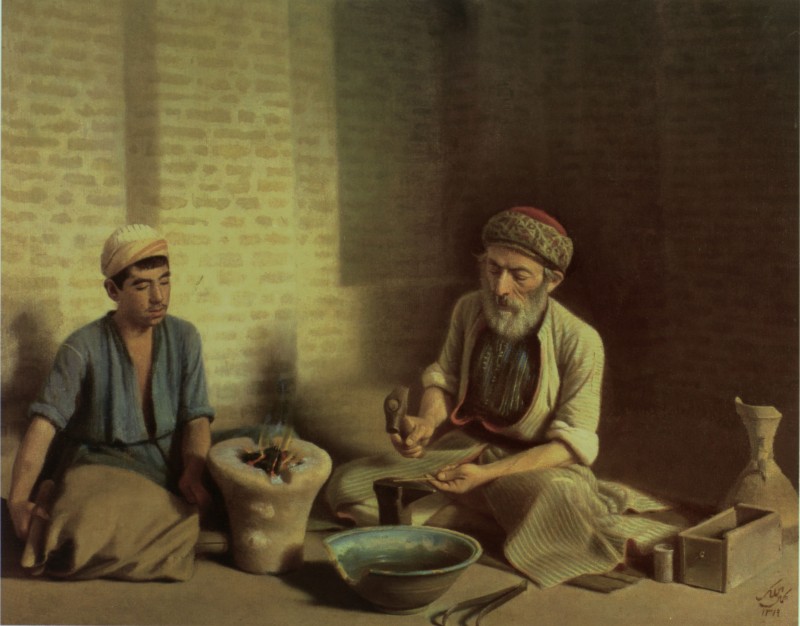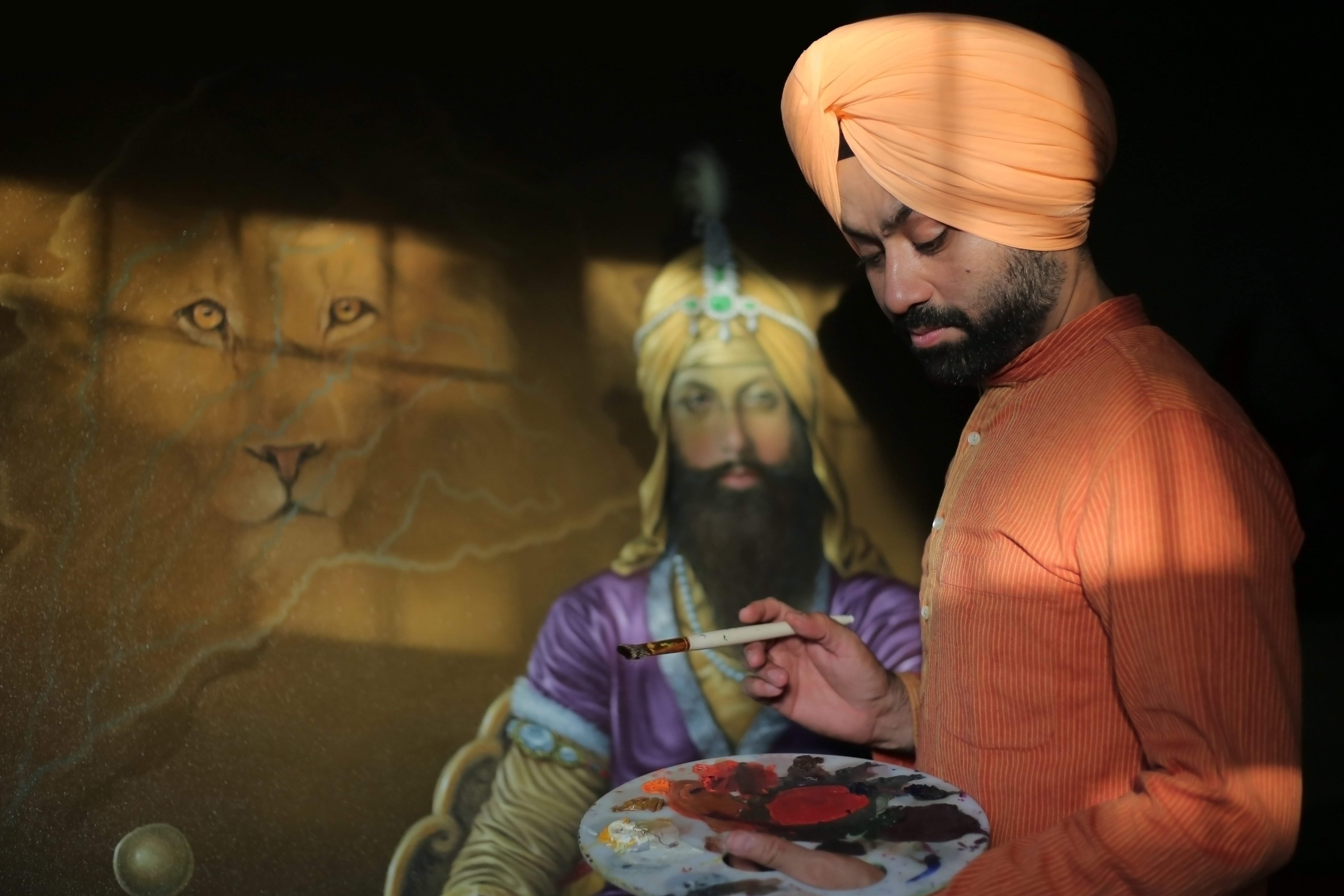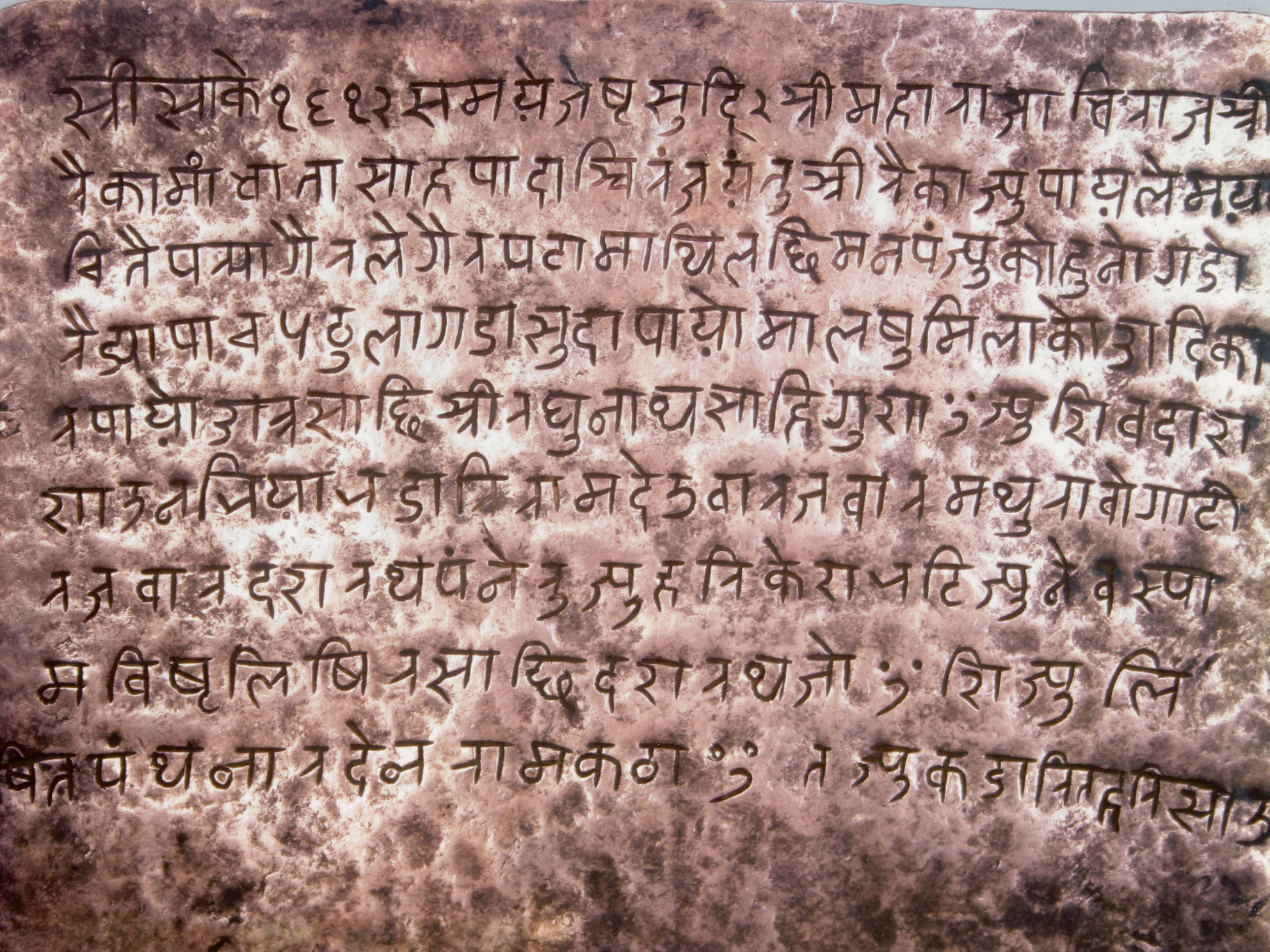|
Sunar
} The Sunar (alternately, Swarnkar, Soni, Sonar, Singh, Shah, Sonkar) is a caste in India.The Sunar community work as traders of gold or as goldsmiths. The community is primarily Hindu, Sikhism, Muslim and found all over India. Etymology The term ‘’Swarnkar '' may derive from the Sanskrit ''suvarna kār'', "worker in gold". The Swarnkar are still involved in their traditional occupation, that is being goldsmiths. There is however a steady process in taking up other occupations, and the community in Haryana and Punjab as whole is fairly successful, having produced several professionals. Social status The Sunars are generally considered a part of Vaishya varna. Factions The Sunars are divided into a large number of territorial and non-territorial groupings called alla. Some of the major alla are the Jhankhad, Santanpuriya, Lal sultaniya, Dekhalantiya, Mundaha, Bhigahiya, kulthiya, Parajiya, Samuhiya, Chilliya, Katiliya Kalidarwa, Naubastwal, Berehele, Gedehiya, Shahpuriya, ... [...More Info...] [...Related Items...] OR: [Wikipedia] [Google] [Baidu] |
India
India, officially the Republic of India, is a country in South Asia. It is the List of countries and dependencies by area, seventh-largest country by area; the List of countries by population (United Nations), most populous country since 2023; and, since its independence in 1947, the world's most populous democracy. Bounded by the Indian Ocean on the south, the Arabian Sea on the southwest, and the Bay of Bengal on the southeast, it shares land borders with Pakistan to the west; China, Nepal, and Bhutan to the north; and Bangladesh and Myanmar to the east. In the Indian Ocean, India is near Sri Lanka and the Maldives; its Andaman and Nicobar Islands share a maritime border with Thailand, Myanmar, and Indonesia. Modern humans arrived on the Indian subcontinent from Africa no later than 55,000 years ago., "Y-Chromosome and Mt-DNA data support the colonization of South Asia by modern humans originating in Africa. ... Coalescence dates for most non-European populations averag ... [...More Info...] [...Related Items...] OR: [Wikipedia] [Google] [Baidu] |
Sindh
Sindh ( ; ; , ; abbr. SD, historically romanized as Sind (caliphal province), Sind or Scinde) is a Administrative units of Pakistan, province of Pakistan. Located in the Geography of Pakistan, southeastern region of the country, Sindh is the third-largest province of Pakistan by land area and the Demographics of Pakistan, second-largest province by population after Punjab, Pakistan, Punjab. It is bordered by the Pakistani provinces of Balochistan, Pakistan, Balochistan to the west and north-west and Punjab, Pakistan, Punjab to the north. It shares an India-Pakistan border, International border with the Indian states of Gujarat and Rajasthan to the east; it is also bounded by the Arabian Sea to the south. Sindh's landscape consists mostly of alluvial plains flanking the Indus River, the Thar Desert of Sindh, Thar Desert in the eastern portion of the province along the India–Pakistan border, international border with India, and the Kirthar Mountains in the western portion of ... [...More Info...] [...Related Items...] OR: [Wikipedia] [Google] [Baidu] |
Social Groups Of Haryana
Social organisms, including human(s), live collectively in interacting populations. This interaction is considered social whether they are aware of it or not, and whether the exchange is voluntary or not. Etymology The word "social" derives from the Latin word ''socii'' ("allies"). It is particularly derived from the Italian ''Socii'' states, historical allies of the Roman Republic (although they rebelled against Rome in the Social War of 91–87 BC). Social theorists In the view of Karl Marx,Morrison, Ken. ''Marx, Durkheim, Weber. Formations of modern social thought'' human beings are intrinsically, necessarily and by definition social beings who, beyond being "gregarious creatures", cannot survive and meet their needs other than through social co-operation and association. Their social characteristics are therefore to a large extent an objectively given fact, stamped on them from birth and affirmed by socialization processes; and, according to Marx, in producing and reproduci ... [...More Info...] [...Related Items...] OR: [Wikipedia] [Google] [Baidu] |
Goldsmith Castes
A goldsmith is a metalworker who specializes in working with gold and other precious metals. Modern goldsmiths mainly specialize in jewelry-making but historically, they have also made silverware, platters, goblets, decorative and serviceable utensils, and ceremonial or religious items. Goldsmiths must be skilled in forming metal through filing, soldering, sawing, forging, casting, and polishing. The trade has very often included jewelry-making skills, as well as the very similar skills of the silversmith. Traditionally, these skills had been passed along through apprenticeships; more recently jewelry arts schools, specializing in teaching goldsmithing and a multitude of skills falling under the jewelry arts umbrella, are available. Many universities and junior colleges also offer goldsmithing, silversmithing, and metal arts fabrication as a part of their fine arts curriculum. Gold Compared to other metals, gold is malleable, ductile, rare, and it is the only solid metalli ... [...More Info...] [...Related Items...] OR: [Wikipedia] [Google] [Baidu] |
Parmish Verma
Parmish Verma (born 3 July 1990) is an Indian singer, rapper, music video director, videographer and actor associated with the Punjabi Music and Punjabi Film Industry. He started his career as a video director then singer, and later debuted as an actor with the film '' Rocky Mental''. Early life Verma was born in Patiala, in a Punjabi Khatri family to a Hindu father Dr Satish Verma, a theatre artist, writer and professor, and a Sikh mother Paramjit Kaur, a professor. He has two siblings; his brother’s name is Sukhan Verma and his sister’s name is Sherry Rana. Career Parmish started his career as a director with the video ''zimmewari bhukh te doori'' (responsibility to stay away from hunger) which was the story of an adolescent boy. It was based on the life experience of Verma where he described the hard time he faced while living in Australia and about the advice given to him by Gurikk Maan, the son of singer Gurdas Maan. Verma debuted as an actor in the Punjabi movie '' ... [...More Info...] [...Related Items...] OR: [Wikipedia] [Google] [Baidu] |
Gurpreet Singh (artist)
Gurpreet Singh (born 24 July 1976; ) is a modern Indian Painting, painter of local acclaim, he also has a hand in photography. He had received few awards and held painting exhibitions in Punjab. Early life Gurpreet Singh was born in a Sikhs, Sikh family on 24 July 1976 in Bathinda to a Shinh () family who trace their roots back to Rajasthan. Primarily Autodidacticism, self-taught, Gurpreet painted piece paintings and made sculptures in Bathinda early in his career. To earn extra money, he worked for a toy company designing and building toys when he was in 10th Grade. He completed college Bachelor of Arts, B.A., Master of Arts, M.A. History of Fine Arts from GNDU Amritsar and M. A. Fine Arts from Jiwaji University Gwalior. He married Ghazal in 2000. The couple have two children, a boy and a girl Kunwar jai Singh and Sargam. Painting Works In his career Gurpreet Singh has painted hundreds of paintings where his main focus is on Sikh History. He has done several series such as ... [...More Info...] [...Related Items...] OR: [Wikipedia] [Google] [Baidu] |
Raj Babbar
Raj Babbar (born 23 June 1952) is an Indian Hindi and Punjabi language, Punjabi film actor and politician belonging to Indian National Congress. He is a three-time member of the Lok Sabha and a two-time member of the Rajya Sabha. He was the state President of Uttar Pradesh Congress Committee. Early life and education Babbar was born in Tundla, Uttar Pradesh, into a Punjabis, Punjabi family on 23 June 1952. His family has long settled in Tundla, Firozabad District since the Partition of India, partition. Their ancestral roots lie in Jalalpur Jattan, a city now located in the Gujrat District of Punjab, Pakistan, Punjab in modern-day Pakistan. He did his initial schooling from Mufid-E-Aam Inter college, Agra. He is an alumnus of the 1975 class of the National School of Drama and graduate from Agra College. Career He trained at the Method school of acting at NSD, which is involved in Street Theatre. After his training in New Delhi, he moved to Mumbai and started his film career w ... [...More Info...] [...Related Items...] OR: [Wikipedia] [Google] [Baidu] |
2011 Nepal Census
Nepal conducted a widespread national census in 2011 by the Nepal Central Bureau of Statistics. Working in cooperation with the 58 municipalities and the 3,915 Village Development Committees at a district level, they recorded data from all the municipalities and villages of each district. The data included statistics on population size, households, sex and age distribution, place of birth, residence characteristics, literacy, marital status, religion, language spoken, caste/ethnic group, economically active population, education, number of children, employment status, and occupation. *Total population in 2011: 26,494,504 *Increase since last census in 2001: 3,343,081 *Annual population growth rate (exponential growth): 1.35 * ... [...More Info...] [...Related Items...] OR: [Wikipedia] [Google] [Baidu] |
Madheshi People
Madheshi people () is a term used for several ethnic groups in Nepal living in the Terai region of Nepal. It has also been used as a political pejorative term by the Pahari people of Nepal to refer to Nepalis with a non-Nepali language as their mother tongue, regardless of their place of birth or residence. The term ''Madheshi'' became a widely recognised name for Nepali citizens with an Indian cultural background only after 1990. Madheshi people comprise various cultural groups such as Hindu caste groups, Muslims, Marwaris, Brahmin and Dalit people, ethnic groups like Maithils, Bhojpuri, Awadhi and Bajjika speaking people and indigenous people of the Terai. Many of these groups share cultural traditions, educational and family ties with people living south of the international border in Bihar, Uttar Pradesh and West Bengal. Tharu people and Pahari people living in the Terai do not consider themselves as Madheshi. Etymology The word ''madhesh'' is thought to be deri ... [...More Info...] [...Related Items...] OR: [Wikipedia] [Google] [Baidu] |
Khas People
Khas peoples or Khas Tribes, (; ) popularly known as Khashiya are an Indo-Aryan ethno-linguistic group native to the Himalayan region of the Indian subcontinent, in what is now the South Asian country of Nepal, as well as the Indian states of Uttarakhand, Himachal Pradesh, West Bengal, Assam and Sikkim. Khas consists of many subtribes like Kshetri, Thakuri, Bahun and Sanyasis and all spread across the Himalayas. According to the Constitution of Nepal, Bahun, Kshetris, Thakuris, and Sanyasis (Dashnami) who are citizens of Nepal should be considered as "Khas Arya" for electoral purposes. Historically, Khas were the speakers of an ancient ''Khas language'' from the Indo-Aryan language family and the earliest recorded speakers of the Western Pahari languages. The large portion of the Indo-Aryan speakers throughout lower Himalayas were the Masto people. An intrusion of this tribe from the Western and Northwestern Himalayas into Central Himalayas is substantiated b ... [...More Info...] [...Related Items...] OR: [Wikipedia] [Google] [Baidu] |




